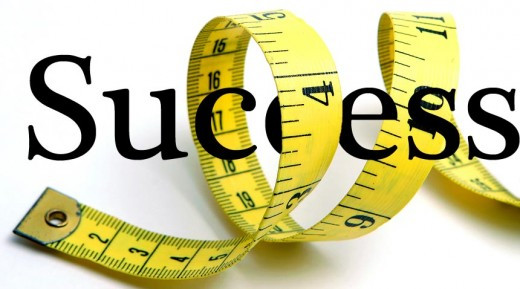Have you ever had a conversation with someone who can’t answer the question “what does success look like to you?”
I have. It’s a frequent one for me.
Look, innovation can be nebulous and vague sometimes. I mean experiments sometimes are vague – sometimes it’s just a test to see what happens. “Let’s see what happens” is fine, as a means and an end unto itself. I’ll be honest, I’ve done some pretty stupid things in my life (personal choices) where I’ve done something just to see what happens. Usually it’s out of boredom, or trying to break out of entropy (something, anything, has to change, so let’s catalyze it by doing something dumb). Often I’m left with a minor mess to clean up. Once in a while something interesting or good or exciting comes of it (perceived risk/reward). Other times, I really, really hate the bag I’m left holding (or staring at a bridge on fire).
But here’s the kicker: those experiments don’t start with a clue about what I actually want the outcome to be. That is failure. And some of my failures have been spectacular disasters.
I didn’t know what success ought to have looked like, even if the experiment was later deemed a success (my dramatically subjective assessment criteria aside). I didn’t even know what success could have looked like, primarily because I didn’t know what I wanted out of it. I didn’t imagine the outcome.
Outcomes.
Outcomes, those pesky things called consequences, are the fine print in any action. Life is a series of consequences. And consequences are what experiments produce. So that means innovation is a series of outcomes different from the status quo. Right? Well, no.
We’re actually missing a bit of the definition here. What it should read is: Innovation is a series of recognized, consciously applied outcomes different from the status quo. And we cannot achieve innovation if we cannot answer the question of what success looks like.
Success isn’t just measuring a difference, that delta between the now and the new. It goes beyond numbers and metrics. It has its origins in purpose. Success comes down to acknowledging what your intention actually is. It requires being really honest about whyyou do something: the root why, not the superficial why. And that can be incredibly uncomfortable to identify, let alone say out loud.
Recently I had one of those frustrating conversations with a bank. An entire programme I’d designed, with a clear understanding of why the bank wanted to do it, got scrapped because project ownership changed hands. There were political implications, both in the original programme design, and the subsequent change over, thus the scrapping and starting over.
But in starting over, the bank went back to its own drawing board (in isolation) to come up with a fundamentally new thing, which they still wanted us/me to work on. They fleshed out the mechanics, looked at process and current resources, and then proceeded to enlighten me on what the new thing would look like.
I kept asking one question: what do you want to get out of it?
No one could answer. And if I’d not been listening, they would have buried me in an avalanche of words describing the mechanics and process, again and again. I counted how many times I asked that question: six. I counted how many times the question remained unanswered: six. I didn’t bother asking again.
I have hubris enough to think I listen well and can infer what someone wants (that stuff lies in the whitespace of the conversation). Sometimes I’m daring enough to blurt out my guess as to their intention, blurting bluntly and directly. My track record is pretty good at hitting the bulls eye, too. But in this case, I kept my mouth shut in the moment, sat back, and thought about what they weren’t saying.
They weren’t saying what the purpose was for the entire project. They could tell me what the purpose of a mechanical thing or logistic was, but they couldn’t tell me why that mechanical thing mattered as an outcome, or why it served a purpose in the bigger end objective. They could never answer the two fundamental questions: What do you want to do, and Why do you want to do it?
They couldn’t answer what the purpose for the whole exercise was.
When it comes to banking innovation we have to be honest with ourselves about why we want deliver banking differently. The honest answer is, and always will be: to make profits. But for some reason profitability is a dirty word. My friend and colleague Leda Glyptisspoke about this at length (if you were at Money20/20 in Amsterdam this past June, you surely caught her keynote: Money is not a dirty word (starts at 2:56). Her advice is this: get comfortable NOW with taking about money and profitability. Right now.
Profitability has these great externalities in our digital age: better customer service, better and more nuanced offerings, better relevancy to our daily lives, efficiencies and speed, and less paper (happier trees). These are just a few, especially since finance underpins every aspect of our daily lives. The more efficient and economical it is to move money around, the more we see the practical results not just in our pocketbook, but in our ability to access other goods and services that have material impact on our quality of life.
Now back to the honest answer. If we are doing something, if we are innovating, it has to be more profitable. Profitable to our balance sheets, to our end customers (and shareholders), to our own aims and ambitions (political motivation matters, let’s face it, it matters a lot). Innovation has to have a direct impact on revenue, or it isn’t innovation.
Everything we do, every programme or imperative or project we design and undertake has profitability at its root. So should the answer to every WHY and WHAT question stem from that reason. And that means that success can be defined by impact to profitability, and the answer to every “Why do it that way” mechanical question should map back to that same principle.
And here is where I get frustrated. If the mechanics of something are being used because they are there, or a team is in place doing a routine exercise, and no one, no one at all can answer the WHY and WHAT question beyond “we have it, so we use it” or “it’s convenient” or “this is the way we’ve chosen to set it up”, where they fail to map it back to profitability in a concrete and practical way, then they have no way to define or measure success.
Why can’t they measure success? Because they have no way of consciously applying outcomes to move the needle. They don’t care about outcomes; they only care about activity. Activity alone has no purpose, it is vaporware . Consciously applied outcomes, on the other hand, are ripe with purpose: with purpose, impact, and innovation.
And without this purpose, we can never achieve profitability. Without purpose, we can never be honest about our intentions. Without honesty, we can never succeed. So why bother trying to measure success if you can’t be honest about the WHY and the WHAT? Why bother? It ends up being no bother at all, because nothing will change without that honesty.
If you don’t know what you want the outcome to look like, I know a place where you can stock up on trash bags and cleaning supplies for a discount. You’ll need ‘em.

